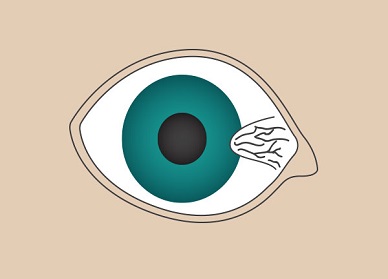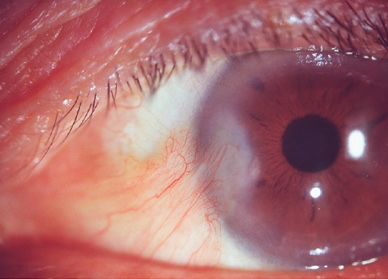A Pterygium is a fleshy growth at the white of the eye that can slowly extend across the cornea, causing symptoms of irritation, redness and may eventually affect vision. For more information on pterygium, please click here.
Whilst eye drops may reduce symptoms from the pterygium to a tolerable level, the only curative therapy is surgery to completely remove it and prevent it from growing further.
WHAT HAPPENS DURING PTERYGIUM SURGERY?
Pterygium surgery is usually done under local anaesthetic with light sedation, making it painless during the surgery. However, general anaesthesia (i.e. being put to sleep for the surgery) can be requested if required.
During the surgery, the pterygium is removed and a small piece of mucous membrane tissue is taken from elsewhere on the eye (usually from a part of the eye normally covered by the upper eyelid), and grafted into the bed where the pterygium was removed. This graft tissue is held in place by special fibrin glue or sutures.
Before Surgery

Before Surgery

Procedure

After Surgery

WHAT HAPPENS AFTER PTERYGIUM SURGERY?
After the operation, it is normal to experience some pain in the eye. This generally improves over the next few days but may last about a week. It is recommended to take at least one week off work following surgery. Simple over-the-counter or stronger prescription pain-killers will help make it more comfortable.
The eye will appear quite red for several weeks and gradually fade with time. There is usually transient blurring of vision for a few days before it returns to normal. In some people, a change in glasses prescription / strength is expected especially those with a larger pterygium that has grown close to covering the pupil. Antibiotic and anti-inflammatory eye drops will need to be instilled for several weeks after surgery.
ARE THERE ANY RISKS?
Generally speaking, pterygium surgery is a very safe procedure. It is extremely rare for it to cause permanent loss of vision (e.g. from infection). Occasionally, the conjunctival graft may move or become dislodged (e.g. from eye rubbing) during the first few post-operative weeks whilst the graft is still bedding into the surrounding tissue. For the large majority, however, no further surgery is required.
Recurrence of pterygium can also occur. This happens in less than 2.5%. In many cases, they are mild and may not require further surgery. Some, however, will require a repeat removal procedure.
If you would like more information on pterygium surgery, our doctors at Applecross Eye Clinic can discuss this with you further.
